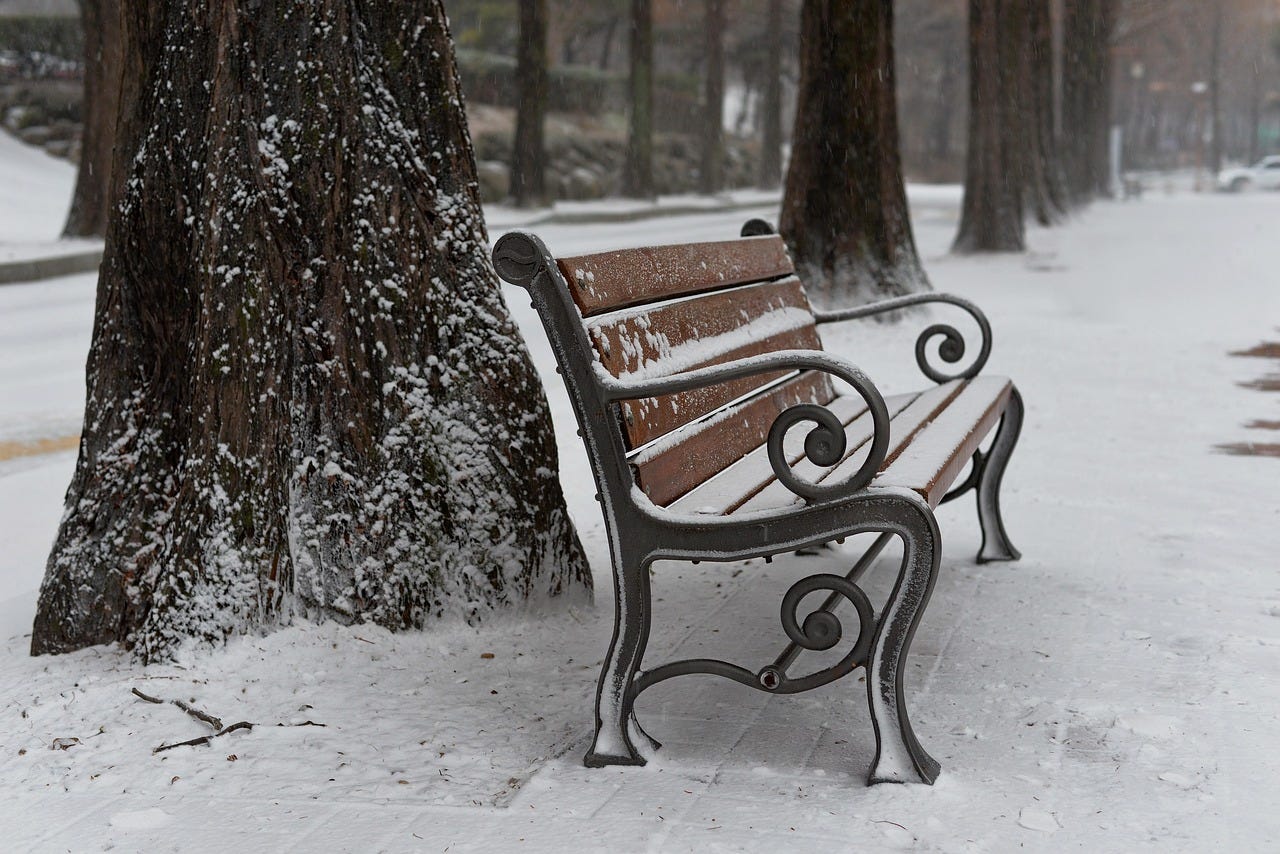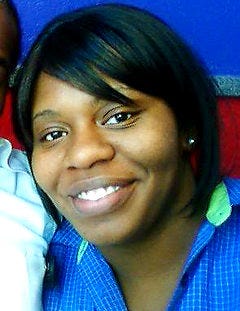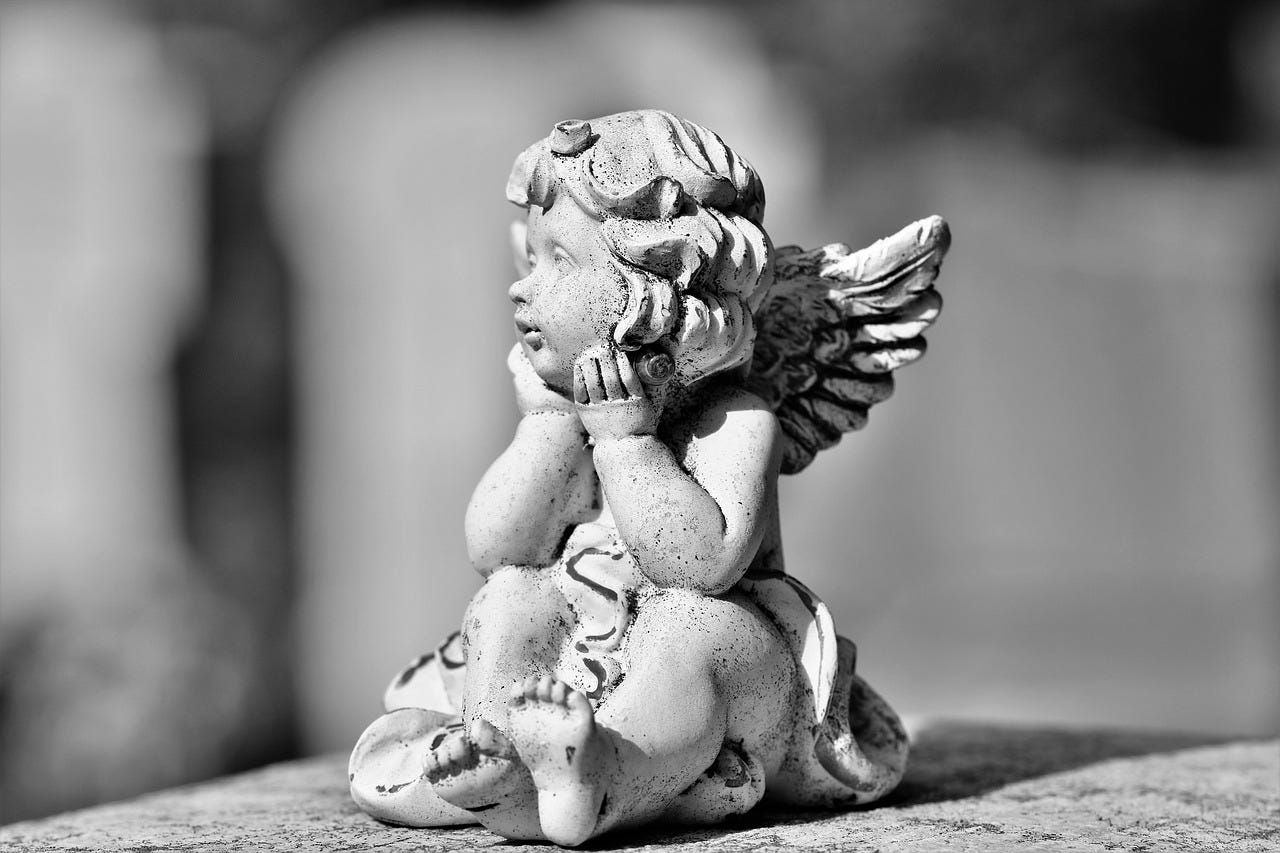From the Past: LaShanda Armstrong
A mother leaving a toxic relationship pushed too far by her ex decided on a cold April day that she couldn't leave her kids behind when she took her own life
The roar of traffic drowned out the screams of a lone ten-year-old boy on the side of the road, soaking wet, shivering, and trying desperately to wave down someone, anyone, to stop for him. As drivers passed him by, one woman stopped when she spotted him waving his arms and shouting.
Maeve Ryan, 31, pulled over when she saw the boy, Leshaun Armstrong. His words sent an extra chill through the cold on that April day in 2011.
“My mommy drove the car into the water.”
“I got out of the car and went halfway in the water to see if I could see their car,” Ryan told the New York Times.
LeShaun also told Ryan that his mother was upset about her boyfriend cheating on her and that they’d had a big fight about it earlier that night.
The Daily News reported that LaShanda’s aunt, Angela Gilliam, had called police that night out of concern for her niece and was happening at the residence that night. By the time police arrived, no one was home.
Ryan drove Leshaun to the nearest fire station. But when they arrived, it was almost empty, with the trucks already out on call. So she knocked on the dispatcher’s office door, she said.
Leshaun, dripping wet with frigid water, shivering, tried to find the words to describe what had just happened, what he had survived.
His mother, he told them, had driven her mini van with him and his three siblings into the Hudson River.

The Daily News reported that Leshaun said he screamed and pleaded with his mother to stop as she drove down the ramp.
“Mommy, Mommy what are you doing?”
He also revealed that his mother, 25-year-old LaShanda Armstrong, changed her mind about her actions partway through the ordeal and tried to reverse out of the river, but it was too late. He explained that she had climbed into the backseat with the kids: him, 11-month-old daughter Laianna, and two of her sons, 5-year-old Lance and 2-year-old Landon.
“If we’re going to die, we’re going to die together,” she said.
Leshaun was the only one who managed to open a window, escape and swim out, though he said that his mother tried to grab his leg to pull him back inside. By the time he swam to shore, the van vanished beneath the cold waters. From there, he fled to the road to try and flag down help until Maeve Ryan pulled over for him.
According to NBC, police said that the van went under the water in about two minutes, submerging about 10 feet into the water about 25 yards from the shore. Divers searched the river for about an hour before finding the vehicle.
A single mother, a tumultuous relationship, and her breaking point
About a half hour before taking that fatal drive into the Hudson River in Newburgh, New York City on April 12, 2011, LaShanda made a haunting post to Facebook:
“I’m so sorry everyone forgive me please for what I’m gonna do.... This Is It!!!!”
Her final message and her actions left her family devastated, and the family of the father of the three deceased children shunning LaShanda’s relatives. Jean Pierre spoke out eight days after the deaths of his children, via a statement through his lawyers, according to the New York Post.
“I have been inaccurately portrayed as being directly responsible for the tragedy. If I could, I would have changed some things in my past,” he said.
While police said there wasn’t a history of domestic violence at LaShanda’s home, the people who knew the couple tell of a combative relationship. At around the same time as LaShanda posted the Facebook update, Pierre reportedly banged on her door and shouted.
The angry conflict had started at about 6:30 p.m., when he allegedly violated a no contact order by showing up to the home.
“The dad was banging on the door real loud,” Latoya James, a neighbor at the time, told the Daily News. “He called to her, ‘Open the f—— door!’ He was there about a half an hour – he was on the phone as well.”
Reports from the time state the fight was allegedly about Pierre cheating on LaShanda with another woman. This incident ended with Leshaun answering the door and talking to Pierre. James said Lashaun told Pierre, “Daddy, I love you,” to which Pierre responded with “I love you too, man” and kissed him on the forehead.
James said a half hour later, he watched LaShanda pile the kids into the minivan and leave.
Another neighbor, Sharon Ramirez, admitted to the New York Times to having a three-month affair with Pierre while LaShanda was pregnant.
According to LaShanda’s landlord, she had asked twice to change the locks to keep Pierre out of the home.
“She said she doesn’t want him here,” John Boubaris told the Times. “He was here all the time.”
According to the Daily News, police arrested Pierre on Feb 7, 2011, after 2-year-old Lance was discovered wandering outside in the snow at about 1:15 a.m. Another neighbor, Mike Lawrence, recalled the incident:
“(Lance) kept saying, ‘Where’s my daddy?’ He was mostly naked, with his pants down around his ankles in the snow,” Lawrence said. “The father came back and asked who had his son. He was with this woman.”

That woman, 20-year-old Shannel Baez, falsely claimed to be Lance’s mother. Pierre was arrested after this incident for endangering the welfare of a child. He claimed to have walked to a nearby gas station when Lance was found outside.
Lawrence also told the Daily News that Pierre had asked him to lie about the other woman to LaShanda.
“If I had known now what I know now, I would have told her,” he said. “Now that’s on me.”
LaShanda also ensured Pierre couldn’t access their children at their day care center, removing him from the list of people allowed to call about or pick up the children.
Shaniesha Strange, a supervisor at the day care center, told NBC that LaShanda appeared to be stressed when she picked up her kids on April 12.
“The only thing she’d say was that she was so alone. She’s a single parent. She takes great care of her kids, goes to school and works. She really needed a helping hand.”
LaShanda’s siblings also told NBC that their sister been withdrawn in the weeks leading up to the deaths.
“Something got under her and clipped her where she felt that there was nothing left,” said her brother, Lenny.
Stephen J. Powers, Pierre’s attorney, told the New York Post that he denied any reports of a judge commanding Pierre to stay away from his children, and that a the charge was adjourned in contemplation of dismissal — meaning that if Pierre remained out of trouble for a certain period of time, the charge would be dropped.
“I loved Landen, Lance, Laianna, Lashanda and still love La’Shaun with all my heart, and am shocked and distraught by what happened,” Pierre said.
Family fued at the children’s service
That combative air of the relationship seemed to have carried on into the funerals of LaShanda and the kids, according to an ABC News report.
On the day when Landon, Lance, dressed in dark suits, and Lainaina Pierre, in a white dress, were laid to rest, anger boiled over at Pierre’s decision to have their service separate from LaShanda’s, and to bury the mother and children separately.
At the service for the children, LaShanda’s family was forced to wait outside on the lawn of Alphonso E. Brown Funeral Home while Pierre and his family went inside. Only LaShanda’s mother was permitted in to view the children, but was sent back outside to wait. Funeral staff had lists they checked as to who could come in.
But Pierre’s attorney Michael O’Connor denied that any restriction on who could come existed. He told the Associated Press that family members were told to provide a list of guests for the funeral home and police, who were there to keep the families apart from each other. O’Connor added they received no complaints in advance.
LaShaun didn’t attend the service for his siblings. Gwendolen Green, LaShanda’s relative, told ABC that “it was too much for him.”
Green added that she was escorted out of the service when she stood up for her 17-year-old son, who she said was “manhandled” when he tried to enter the service. She had managed to get in despite not being on the list.
“You're not going to keep me from going in and seeing my family,” she stated.
She told NBC that LaShanda “was a good mother. She was going through some stuff.”
“Nobody knows what my niece went through,” she added, though she didn’t elaborate. Neighbors who spoke to NBC also called LaShanda a good mother.
At the time of that NBC report, Green told reporters that LeShaun was staying with her.
“I’m still hurting. I will be forever hurting for the rest of my life,” Datrice Armstrong, LaShanda’s mother, told WCBS. “I can’t hear nothing no more from them. I can’t see them no more. I can’t hold them no more. I can’t do none of that.”
A mother put into a corner
While it would be easy to pin Pierre as the bad guy in all of this, we need to remember that mental illness takes roots and grows over a long period of time. While his affairs and bouts of rage certainly didn’t help matters, ultimately he didn’t make the decision to end the lives of his children, and I think it’s important to keep that in mind.
By all accounts, people who knew Lashanda said she was a good, devoted mother, and the kids were always well-dressed, had good manners, and looked out for each other. One neighbor said she “worshiped the ground they walked on.”
Sharon Ramirez, Pierre’s mistress, told the Daily Mail: “He was sleeping around and when she confronted him about it he laughed. He left her at one point because she wouldn’t put up with it. He was old fashioned and treated her like his territory.”
Well, in normal terms, possessiveness is called “toxic”, not “old fashioned”, but I digress.
This could have made LaShanda feel like she was stuck in a corner, especially if Pierre repeatedly violated the protective order. Clearly, the kids weren’t his priority. It becomes evident why Lashanda felt like she had no way out. Pierre wasn’t a reliable parent to leave her kids with, and who knows what his mistresses were like. One had already tried to claim Lance as her own, trying to replace LaShanda or perhaps cover for Pierre. It’s evident that Pierre and his mistresses had no consideration for the well-being of LaShanda and were out for themselves.
Was Pierre rage-filled? Possessive? Neglectful? Controlling? Based on the funeral and his actions on the day of the deaths, it appears so. He seems to have been a selfish and controlling man who unthinkingly contributed to the deteriorating mental health of the mother of his kids.
And by separating LaShanda from them in death, it was one more time he could wield that possessiveness. Shunning LaShanda’s family was a display of power. She took my kids from me, and you will be punished for her actions.
It’s no wonder why LaShanda felt so alone, raising four kids, and combating a possessive man she wanted erased from her life.
If she was already suffering from pain of her break up and repeated harassment from Pierre, and a mental illness, then things had brewed up to the breaking point for a while.
Others say that in the weeks leading up the filicide-suicide, she had been paranoid, telling her sister that someone was watching her, that her lights kept flickering, and some of her diary pages were missing.
Without more details, it’s hard to say what she may have been suffering from. Postpartum depression becoming psychosis, perhaps, after a long period of standard depression.
It’s clear, however, that LaShanda felt that the kids wouldn’t be safe if she were to take her own life, a demented form of mother’s love that led her to commit what is known as “Altruistic Filicide.”
Commenting to CBS, family friend Katrina Whatley seems to have agreed.
“She felt like it was a cruel world. That's what she felt like, like why leave them behind. But we know that that wasn’t a good thing to do.”

What makes this an Altruistic Filicide?
Forensic psychiatrist Phillip J. Resnick created the five classifications of filicide which mothers commit in his long-time studies of the mortifying crime. He breaks defines Altruistic Filicide as when a mother comes to the decision that she cannot keep her children in the world. In a demented form of motherly, unconditional love, she decides to take their lives and genuinely believes it is for the better.
Breaking up this category, Resnick created two sub-types of this filicide: Filicide to relieve pain and suffering, and Filicide Associated with Suicide. I’ve done a deep five on these in my Fatal Maternity series, but in short, this would fall under a Filicide Associated with Suicide.
Typically, the mother has had a history of mental illness, be it depression, postpartum depression or psychosis, or something else, and she has endured enough turmoil in her life that she wants to ends things — but cannot bear to leave her children behind without her. These mothers tend to view their children as extensions of her who cannot live without her. It is a twisted form of love with which she acts upon this.
LaShanda doesn’t appear to have been psychotic at the time of the murders, despite the remarks of a relative who said she was paranoid in the weeks before. There’s no evidence she was experiencing any delusions, hallucinations, or epilepsy when she drove her van into the water. LeShaun said she regretted the decision and tried to reverse the van.
Based on what everyone who knew her said, she was a good mother who loved her kids, so they weren’t unwanted or abused or maltreated by her.
Nor did she appear to be intentionally trying to hurt Pierre. She was trying to push him out of her life, but there is no evidence she weaponized the kids against him like in other cases, say Susan Smith, Julissa Thaler, or Elaine Campione. She asked for forgiveness in her Facebook post. She knew ahead of time what she was going to do but there was no smear campaign (to my knowledge) against Pierre. Her attempts to cut off contact with him and the kids appears to have been an attempt to finalize the break up and stop him from slamming on her door. She didn’t exhibit the rage that is commonly seen in women who commit spousal revenge filicides.
She simply wanted out. And if Pierre wouldn’t relinquish the control he wanted over her and the kids, she would take it on her terms.
The Surviving Son
Days after the tragedy, LeShaun asked relatives if they could return to the river ramp where his mother had driven the van into the cold waters. By then, a makeshift memorial had been set up for the mother and children. His aunt, Angie Gilliam, said he wanted to see it.
“He wanted to go,” Gilliam told the Daily News. “He just looked. I gave him his time and he did what he needed to do. He did a big thing there to get out.”
He glanced over the stuffed animals and balloons briefly, but Gilliam said he mostly stared out at the waters he had desperately swam out of a few nights before.
Maeve Ryan recalled how in the moments after she picked him up, he expressed guilt at not being able to save his siblings.
“He was blaming himself for not teaching them how to swim and for not unbuckling his little sister,” she said, adding:
“It’s not your fault, Lashaun. You’re courageous.”

This story was posted in support to my series, “Fatal Maternity,” a 9-part deep-dive into the psychology behind filicide.
Fatal Maternity: What is filicide?
Mothers who kill their children are gawked upon by society as many female killers are; with a mix of awe, disgust, and indignation that anyone could harm a child, especially their own. Is she crazy? Cold-hearted? Spiteful? A monster? On drugs? Why did she do it?
Sources
New York Daily News






